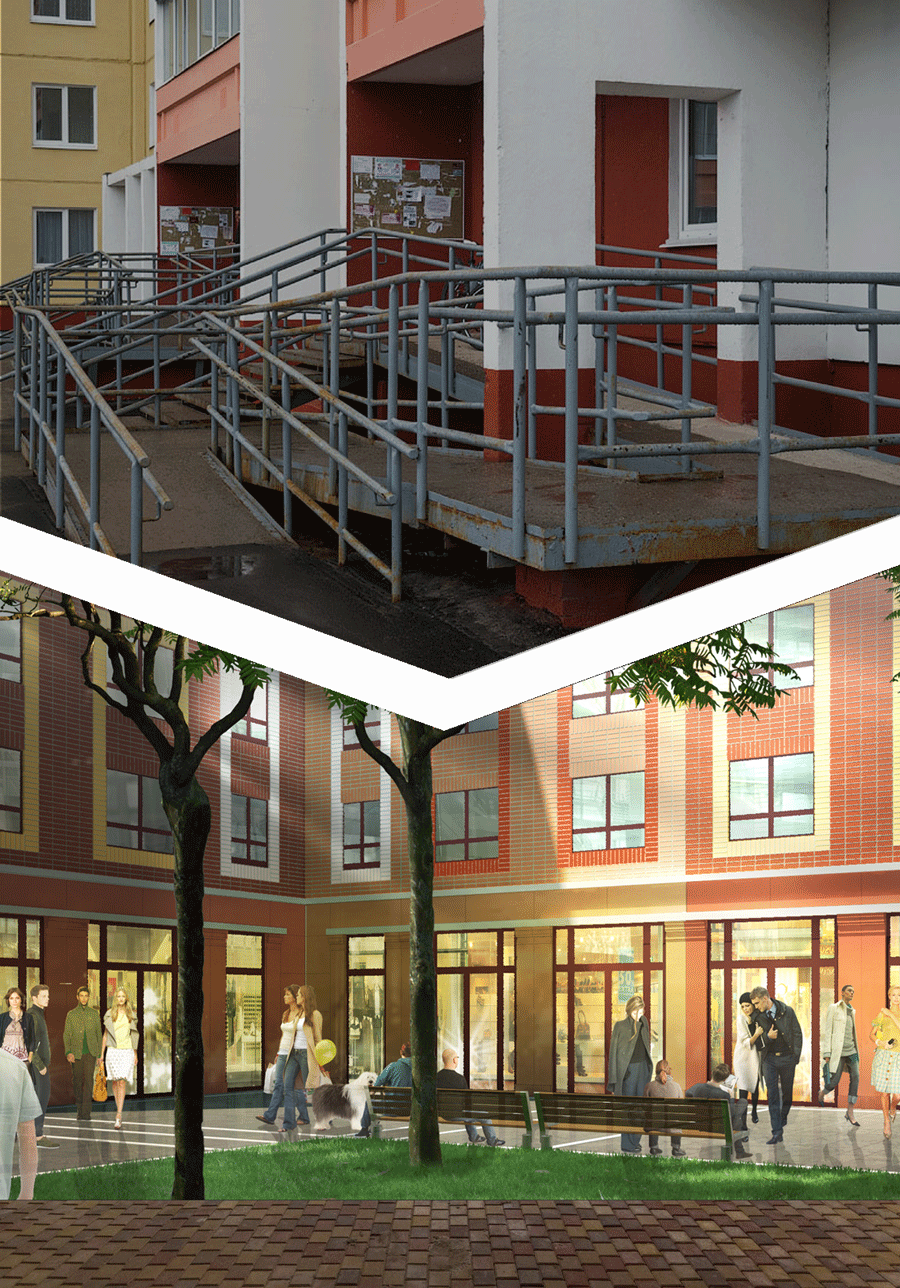New Design Decisions for Panel Buildings vs. Old Construction Technologies: 8 differences
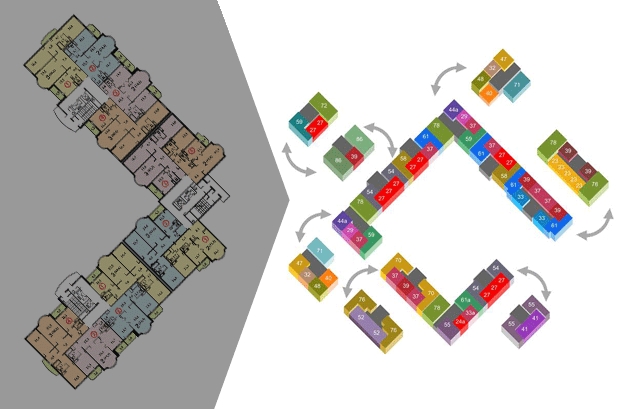
The third and final part of the review of the new series of apartment blocks, which Moscow house-building plants are to start constructing in the beginning of 2016 on the instruction of Mayor Sergei Sobyanin, considers the changes in building layout of standardized apartment houses and ground-floor plans for large-panel system buildings.
Space-planning for standardized residential floors
Variability of space-planning decisions within the section in terms of apartment layout on the floor:
The existing series of apartment blocks do not offer a large variety of options for arrangement of apartments within the section; as a rule, these sections are standardized according to the uniform floor plans. Today, these buildings do not meet the requirements of the city housing programs, as well as the market needs in the sale process. Design features of modern block sections should comply with the constantly changing requirements. Thus, the construction plans for new series should provide potential variability of apartment types on the floor and various section layouts.
Variability of layout solutions for arrangement of windows and loggias/balconies within a block section
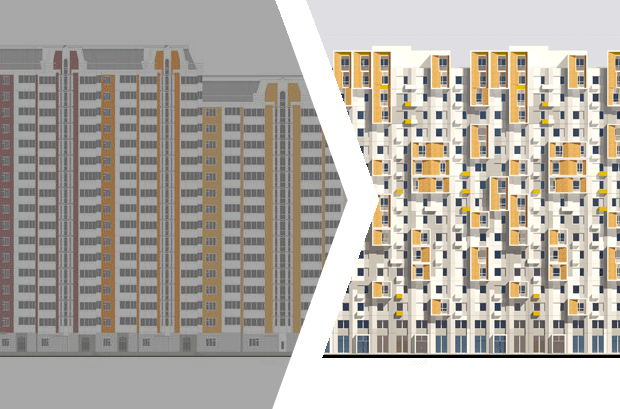
The monotony of the facade solutions for multistory apartment buildings is mainly due to engineering constraints of the structural building framing. As a rule, balconies/loggias in panel buildings have the same position and structure uniform from floor to floor, which creates the «thermometer» effect. Variability of window layout is not possible in buildings like these due to the narrow range of panels for each house.
Having turned to a fully automated production which enables manufacturing a wide range of «parts» for construction of apartment blocks, modern house-building plants can easily alter window or balcony arrangement in the panel. Therefore, nowadays architects need to use actively this advantage as one of the main means to form the individual appearance of buildings.
The height of dwelling units is not less than 2.65 m
Pursuant to existing construction standards and rules, the height of dwelling unitsshall be not less than 2.55m. The new series of panel buildings will be able to increase this parameter thereby improving the comfort of economy class apartments.
Flexibility in apartment planning and possibility to combine spaces
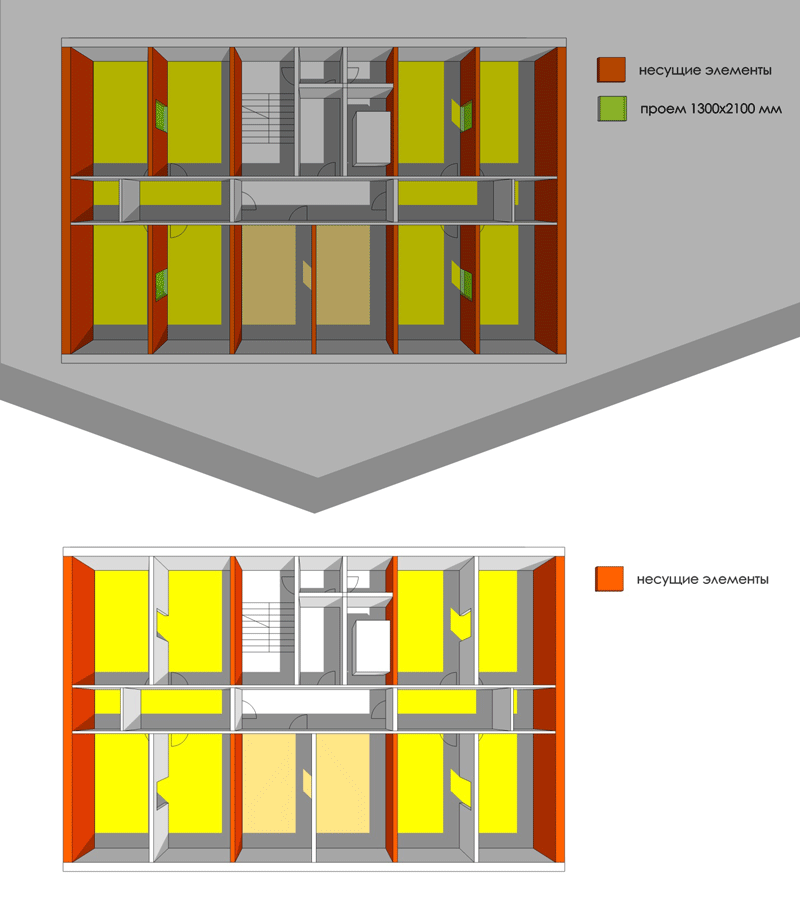
When choosing an apartment, the modern consumer pays attention to the possibility to create a comfortable personal space. Internal apartment planning must provide for plan variations or, at least, openings in interior walls (to combine, for example, a kitchen and a living room). If there is possibility to make additional openings in the walls, the range of plan variations for each section in terms of apartment layout on the floor is extended as well.
Special locations for the outdoor units of air conditioners
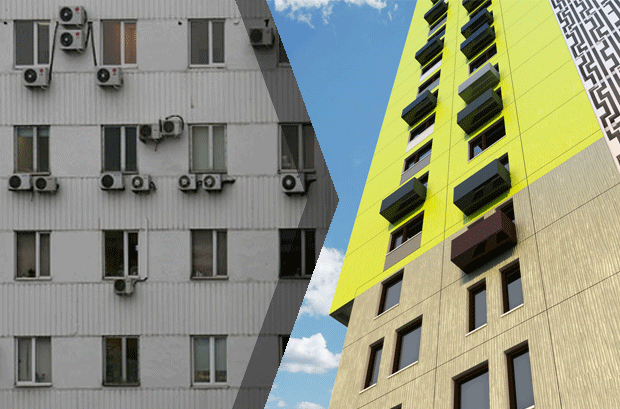
In order to install outdoor units of air conditioners (except for apartment buildings with central air-conditioning systems) special structures and engineering elements (recessed niches, exterior modules with obligatory installation of protective/masking screens for air conditioners spaced across the facade and the accompanying flush wiring of the inner contour of premises) shall be designed. Otherwise, the chaotic installation of air conditioners by residents of the building will spoil the appearance of the facade.
Space-planning decisions for ground floors
Easy access to the place of residence in case of long length buildings. Entrances through residential sections

When designing apartment blocks, entrances to the residential section should be provided — it should be accessed from both the yards and the street, taking into consideration that the yard must remain free of cars. This condition is particularly important when constructing long length buildings, when the footpath of the inhabitants of the house is unnecessarily winding and too complicated.
Entrances to public premises must be located only on the side facing the street, where the front performing the social and household and commercial functions is situated.
Free layout of public premises on the ground floor

The ground floor layout in the existing panel buildings coincides with the standardized ones because of its certain design features; sometimes, it provides for the possibility to make openings in the interior load bearing walls. It is inconvenient to locate shops and other rented spaces there, which makes them non-demanded.
Load-bearing structural elements of the new building series that have rented spaces on the ground floor should provide for free layout of the apartments on the floor and public premises as well. In addition, the higher percentage of translucent structures for fully-featured display windows shall be provided.
Comfortable entrances, minimum difference between the street level, the ground floor and elevator hall, modern design
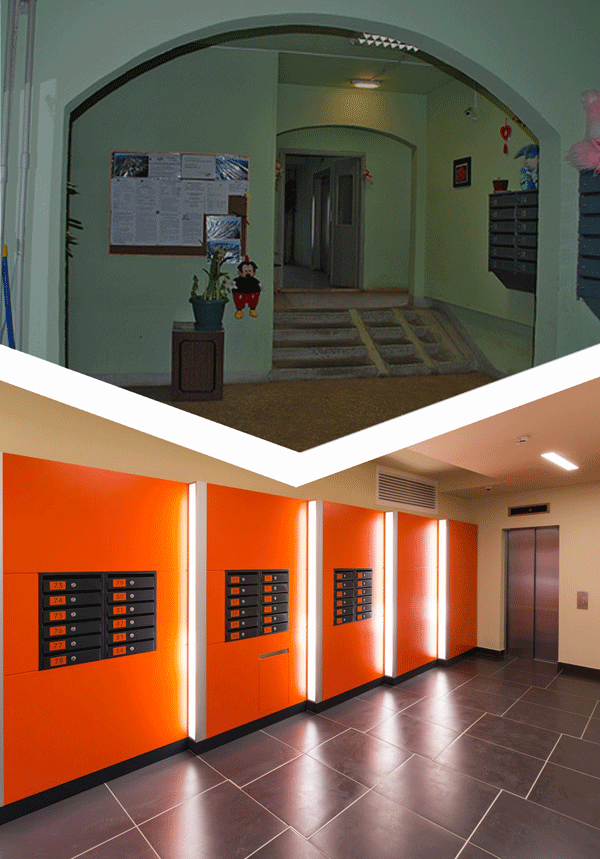
When planning entrances to the buildings, in order to ensure access for people with restricted mobility, modern building projects should, firstly, provide the same level for the floor, without height differences between levels of entrances and elevator halls. And, secondly, it’s necessary to minimize the difference between the level of the entrance from the pavement and the level of the floor in the entrance lobby. (In case of long length building construction and significant level difference of the natural land surface, variability of entrance levels in each section shall be ensured; it is also possible to reshape the land surface by cutting or raising the site and land grading to provide the relief level that is necessary for making comfortable entrances to the lobbies). This is the way to avoid using stairs, ramps and other structures that obstruct the entrance to the building.
Designers should also provide easy navigation to building entrances and use translucent structures when constructing entrance elements.
